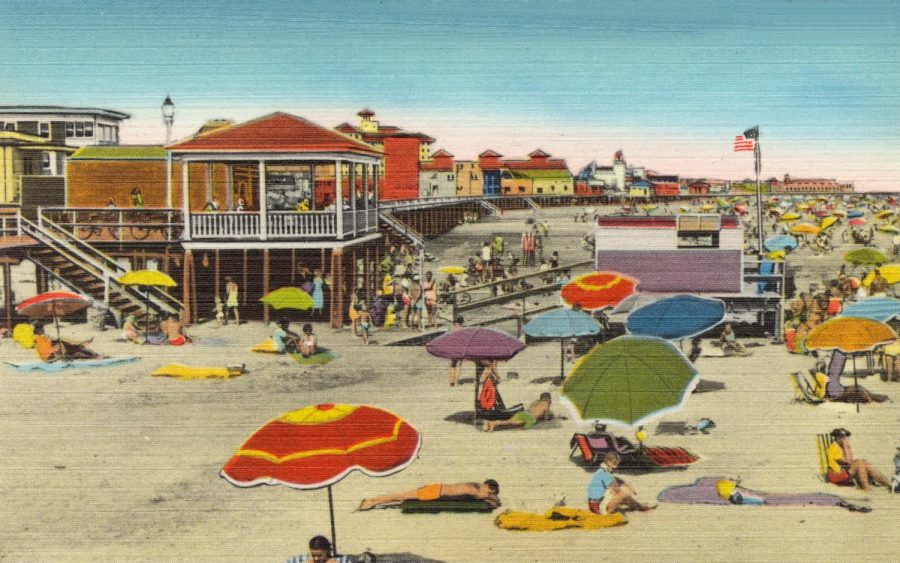Warmer Weather Likely Won’t End the COVID-19 Crisis
Sunbathers have begun entering closed Florida beaches, risking the safety of many. (Photo/Boston Public Library/Unsplash)
May 12, 2020
As quarantine continues to keep people pent up in their homes, many have begun to long for the outdoors and for interaction with others. Many hope the pandemic will die down in summer, like the seasonal flu. Recently, President Donal Trump said that “The heat, generally speaking, kills this kind of virus.” However, most experts doubt things will get better until a vaccine is developed and while it is possible that warmer weather may slow the spread of the disease, it won’t turn social distancing into a thing of the past.
Before explaining why COVID-19 likely won’t be affected by warm weather, it is crucial to understand the effect time and weather has on the rate of infections for viruses. When a virus first emerges, it is guaranteed to wreak havoc. With no previous exposure, the disease has a lot of room to spread, meaning that the weather has a minimal impact on the spread of the virus. This spread is analogous to a fire in a dry forest. Despite precipitation, there are so many trees the fire can engulf that the flames will not be put out by rain. With COVID-19 rampaging across the world for not even six months, it still has the means to spread immensely. Once it has existed for some time, however, and with the social distancing measures put in place, it will recede to some degree and after a year reveal a seasonal pattern. For example, respiratory diseases like pneumonia and flu erupt in winter time until bursts of chicken pox and herpes replace them in spring.
Disentangling the reasons for these patterns are relatively complex. C. Brandon Ogbunnu, a computational epidemiologist at Brown University, explains, “Some viruses—including influenza and COVID-19—are packaged in a fragile, fatty outer layer called an envelope that’s both necessary for infection and sensitive to harsh conditions, including heat and the ultraviolet rays found in sunlight. High humidity can weigh down the infectious, airborne droplets needed to ferry the virus from person to person, preventing the microbes from traveling as far.” Furthermore, Katherine J. Wu of the Smithsonian explains “studies in mice have shown that low humidity can compromise the germ-trapping mucus in their airways and impair the production of critical immune molecules, leaving the rodents more vulnerable to flu viruses.”
Complicating matters further, the sporadic outbreaks of diseases are also caused by human schedules and infrastructure. Children returning to school in fall may prompt an uptick in certain infections like chickenpox. When many people gather indoors during rainy summer months, there is a higher risk of spreading a respiratory disease despite it being in its offseason. “These patterns are so pronounced that they almost form a calendar of pathogens that humans can track and follow,” says Elena Naumova, an epidemiologist at Tufts University. “I honestly believe by nature, life on our planet is seasonal. Therefore, infections are seasonal, too.” It turns out, several people, including ones in our PDS Community, agree with Naumova. Freshman Peter Ryan weighs in on this argument, “While I can’t provide evidence showing COVID-19 is a seasonal virus favoring cold weather, I don’t believe its reduced rate of infection will be enough for everything to go back to normal. If quarantine is lifted, I fear it will only ensue more damage upon us with no social distancing. While I hope the virus recedes in summer, we can’t let our guard down until a vaccine has been found.” However, some believe the opposite. Senior Chris Cecila and freshman David Cohen both agree that “like many viruses including the flu, COVID-19 is likely a seasonal virus which recedes in warmer weather. It could always come back in the fall or winter, but hopefully, a vaccine will be developed by then. We’ve seen Georgia do fine lifting quarantine, so doing it to some degree everywhere wouldn’t be so bad, especially in summer.”
As a respiratory virus, COVID-19 has several traits that might someday reveal a seasonal pattern. If and when the pathogen returns to the human population, infection may peak when the weather is consistently cold and dry like other respiratory diseases, or have spikes throughout the year regardless of the season. However, we still don’t know. Now, the controversial debate is whether to take the risk of the virus receding in warmer weather, lifting quarantine and releasing everyone or playing it safe until we have a vaccine.








